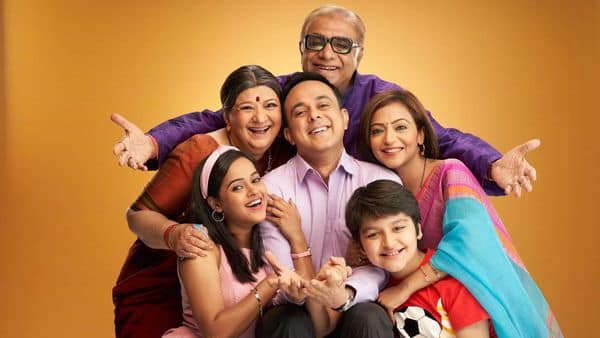
NEW DELHI : The exposure of audiences to OTT (over-the-top) streaming content in the 18 months of the pandemic in India has pushed the Hindi general entertainment channels (GECs) on television tap more real, relatable subjects instead of the age-old melodrama.
Broadcasters said they are recruiting fresh writing talent to tell more contemporary stories and admitted to some cord-cutting among TV audiences. Cord-cutting refers to cable TV or direct-to-home multichannel subscribers cancelling their subscriptions in favour of alternative Internet-based media avenues such as streaming.
At least two broadcasting sector executives said that even the popular TV shows have seen their viewership ratings decline by 15-20% as audiences' tastes have changed.
“Nobody can deny that a lot of content has come into the life of a viewer and that there has been some cord cutting. Television can no longer remain the way it has been so far but it has a delicate role to straddle now—between being relevant and progressive," said Neeraj Vyas, senior executive vice-president and business head for Sony SAB and Sony MAX.
He added that television hasn’t really nurtured writing talent. Now that TV content is facing the OTT challenge, TV shows need to bolster their writing, acting and direction, he said.
On Sony SAB, comedy shows Taarak Mehta Ka Ooltah Chashmah and Wagle Ki Duniya have been touching upon topical issues such as the economic situation post covid, loss of jobs and relationship issues. Another title Kaatelal & Sons was about twin sisters running their father’s salon. “After the coming in of the new tariff order, we’ve all realized we need to smartly balance advertising revenues with subscriptions by families that deem us viable," Vyas added.
Everyone is trying to understand and adapt to the new viewing habits of the audiences after the pandemic, said Nina Elavia Jaipuria, head, Hindi mass entertainment and kids TV network at Viacom18. “With families watching TV together, stories with themes of positivity, hope, empowerment, and dreams have greater resonance with viewers," she said.
Stories that are relatable to the whole family and are steeped in India’s diverse cultures for example—Balika Vadhu 2 being based in Gujarat, Udaariyan in Punjab, Thoda Sa Baadal Thoda Sa Paani in Kolkata, are being appreciated by viewers, Jaipuria added.
At the same time, there are great synergies possible between TV and digital as is being demonstrated with high viewership of popular GEC shows on the company’s OTT platform VOOT, as well as with the success of Bigg Boss OTT, a digital-only version of the TV reality show that premiered six weeks ahead of its debut on television this year.
Non-fiction properties, said broadcasters, with a strong slice-of-life element such as Indian Idol, KBC and Khatron Ke Khiladi, have started off well.
Viewers are lapping up anything that is happy, warm, entertaining and inspirational, said Aradhana Bhola, managing director, Fremantle India that just wrapped up the latest season of Indian Idol.
“TV consumption isn’t about just passing time or flipping channels anymore, viewers are leaning in. They are following stories, characters and contestants in a manner that is much more engaged. As creators, we have had to constantly innovate to ensure that our shows stand out and are sticky enough to retain the viewers’ interest once piqued," Bhola added.
Kailashnath Adhikari, of Shri Adhikari Brothers, an M&E company said retaining eyeballs is the biggest challenge for TV currently. “For which content has to be compelling. Any run-of-the-mill concept will now not work in long run," he said. Shri Adhikari Brothers run TV channels such as Dabangg, Mastiii and Dhamal.
Though Shailesh Kapoor, CEO and founder of research and consulting firm argued TV is a family viewing medium and the audience size is too big for any impact of OTT content to be felt on it, a senior producer said audience tastes have evolved is clear from the drop in viewership for long-running shows such as Kumkum Bhagya (Zee TV) and Saath Nibhaana Saathiya 2 (Star Plus).
On the other hand, Star Plus’ Anupamaa has dealt with women’s issues well and continues to grab eyeballs. “The brief is you can’t do over-the-top melodrama anymore. The subject has to appear contemporary," the producer said.
Zee did not respond to Mint’s queries while Star declined to comment.
“The viewership of these long-running shows is not yet back to the pre pandemic days and the reason for this could be the shift to other online options like OTT, YouTube and other popular growing content platforms," Vishal Shah, managing partner at GroupM-owned media agency MediaCom said. For example, Kumkum Bhagya which used to deliver 2.22 TVR during pre-pandemic, has dropped to 1.23 in July 2021. “The pandemic has strengthened and accelerated the path for digital. However, TV continues to be the primary big screen of the Indian household. One big challenge that TV will continue to face is attract and retain the kids and youth of today who are getting hooked on to online as a medium. These will be key decision makers and part of key wallet shares for many categories tomorrow and hence it is imperative to connect with them," Shah added.







